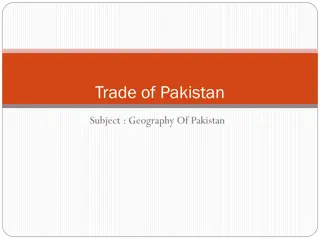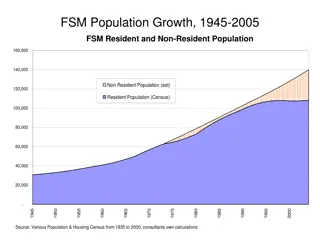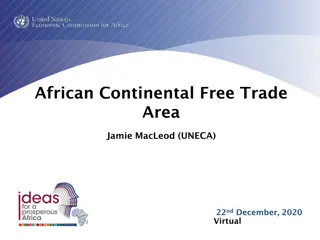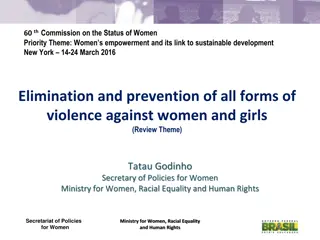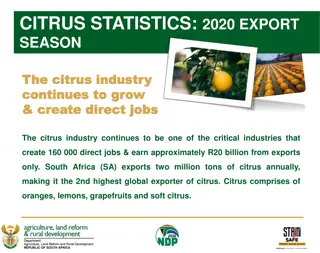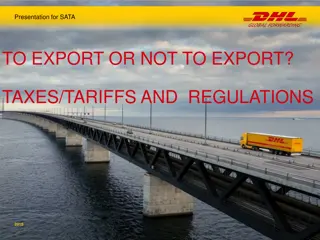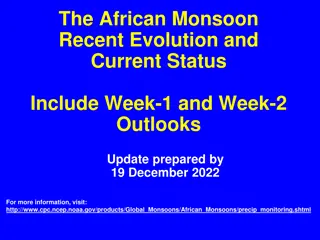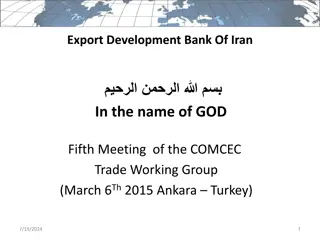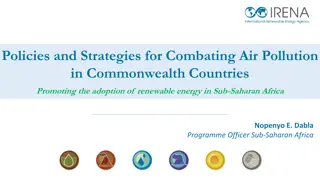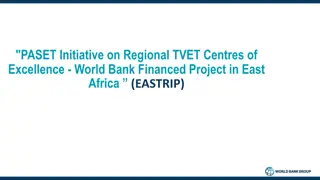Analysis of Sisal Fiber Exports and Market Trends in East Africa, Brazil, and Madagascar
Development of sisal fiber exports in Kenya, Tanzania, Madagascar, and Brazil over the past two years shows stability in East Africa and Madagascar, while Brazil experiences a notable increase in volume. Factors influencing production and exports include weather conditions, production costs, re-planting investments, and market trends. Weather fluctuations, such as droughts and floods, significantly impact sisal production in these regions. The competition between Brazilian and African sisal markets is highlighted, with a price gap favoring Brazil in recent years.
Download Presentation

Please find below an Image/Link to download the presentation.
The content on the website is provided AS IS for your information and personal use only. It may not be sold, licensed, or shared on other websites without obtaining consent from the author. Download presentation by click this link. If you encounter any issues during the download, it is possible that the publisher has removed the file from their server.
E N D
Presentation Transcript
Development of Sisal exports in the past two years KENYA 2017: abt. 20.140 tons 2018: abt. 22.810 tons TANZANIA 2017: abt. 25.070 tons 2018: abt. 23.450 tons MADAGASCAR 2017: abt. 6.250 2018: abt. 5.890 BRAZIL 2017: abt. 23.200 tons 2018: abt. 29.500 tons Based on the above figures the development in exports of Sisal fibres appear to be quite stable for East Africa and Madagascar. For Brazil there is a notable increase in volume which however must be seen in relation to a larger time frame.
BRAZIL - within the year 2018, the prices for Brazil fiber have fallen by about 20%. With the low price level Brazil has regained competition which had it s positive impact on export activities from August to end of the year. The price gap between Brazilian and African Sisal has become larger again and is currently USD 500 per ton. Historically, this price gap has always been a minimum of USD 500 to USD 600 per ton. The low level of Brazilian Sisal has made it more attractive to customers, especially in the Chinese market. For the past two years Brazil has re-planted again Sisal. It has been reported that about 10.000 hectares have meantime been re-planted in the Sertao and Coite regions. These plants will however become mature in a few years only. EAST AFRICA re-planting of Sisal is done in all Sisal producing (and exporting) countries in East Africa also on Madagascar. However there is governmental restrictions (giving preference to food crops) in Kenya and Tanzania that hamper the extension of Sisal plantations. Thus in both countries an increase of production can only be achieved by increasing productivity. These restrictions do not exist in Mozambique and the producers in this country have intensified their investments in new Sisal plantations. Soils in the region of Nampula are rich and all over the Nampula region larger areas have not been farmed for decades.
There is various factors that have impact on production and exported volume of Sisal - factors that are (to name just a few): weather conditions production costs (labour/energy etc.) investments in re-planting and new plantations market trends / developments by the industry exchange rates of currencies involved in the trade of Sisal fibres
Weather conditions certainly have become one of the most important factors to influence the Sisal and other natural fibre markets. After months of drought Sisal producing countries suffer from severe rains a situation that unfortunately has become quite normal in the recent years. Kenya and Tanzania had to suffer badly from floods in March and April of 2018. This year situation is quite opposite and rains are badly needed. Short term and long term rains are no longer predictable. From Tanzania, rainfalls have been reported even in August 2018 when this period normally is a rather dry and windy period. Production on Madagascar has shown a continuous downward trend in the past years because of drought and production came down by 25% within a period of three years only. In January and February of this year the South of Madagascar (where the sisal plantations are located) received heavy rains and parts of plantations were flooded. On the other hand overharvesting during dry season is another fact that has led to reduction in production in Madagascar. Also the North of Mozambique (where the Sisal plantations are located) regularly suffers from strong rains and floods in the period from January to March of each year. Weather phenomena (like El Ni o, La Ni a or others) will continue to have a strong impact on the Sisal production worldwide.
Looking at the development of the Sisal market in the past years we see on the one hand traditional markets where Sisal fibres are used for spinning (yarns/ropes) and weaving (carpets/polishing cloth). Also the production of pulp and paper industry belongs to this traditional segment of this market where Sisal fibres are used in larger volumes. Both aforementioned segments depend on stability of prices (on long term basis) and dependability of supply. On the other hand there is another industry which used to be rather a niche but gained importance in the past years. Before it was described as a new emerging market but its todays importance is underlined by the huge volumes imported by this industry. It is the construction industry (Saudi-Arabia, Middle East, North African and West African countries) where Sisal fibers are used for gypsum / plastering works. The continuous strong demand of this industry has sharply influenced the Sisal market especially under consideration that there is already an imbalance in supply and demand. The clash between traditional and new markets is one of the factors that has pushed the prices to the comparatively high level that we currently find in the market. Despite the fact that most of the construction markets are meantime well saturated the demand is unbroken. This is most likely to continue considering the enormous number of enquiries that are still received from the construction industry.
China is the largest importer of Sisal fibres worldwide. In this connection it should be mentioned that the local Chinese Sisal production (in the provinces of GuangDong and Guangxi) has been reduced to only about 20.000 tons (average 2017/2018) while years ago it was the double. The Chinese paper industry had to experience larger problems in 2018 as new governmental regulations for environment protection had been implemented. Most of the pulp and paper productions in China were forced to temporarily close their productions and install new machinery. Stocks of Sisal have accumulated and are used with huge delay of time only.
At short term there is no significant changes to be expected in the market in terms of pricing and availability. It is good to see that despite the adverse weather conditions of the past years Sisal growers still invest in re-planting especially in East Africa and Madagascar so rather sooner than later we should come to a more balanced supply / demand situation. The special properties and technical performance of Sisal fibres are recognized by the industry and the global demand for Sisal fibres should remain at worst, stable. Sisal is a renewable resource that absorbs more carbon dioxide than it produces during its life span. More and more industries are intensively trying to integrate natural fibres into their products and Sisal is playing an increasingly important role in these thoughts. The year 2009 had been declared as the International year of natural fibres by the FAO. Looking back on the last 10 years, one can only say that the FAO's impetus came at the right time.






